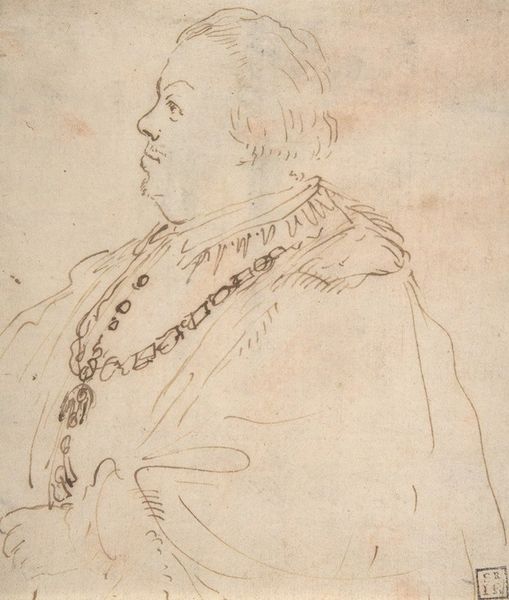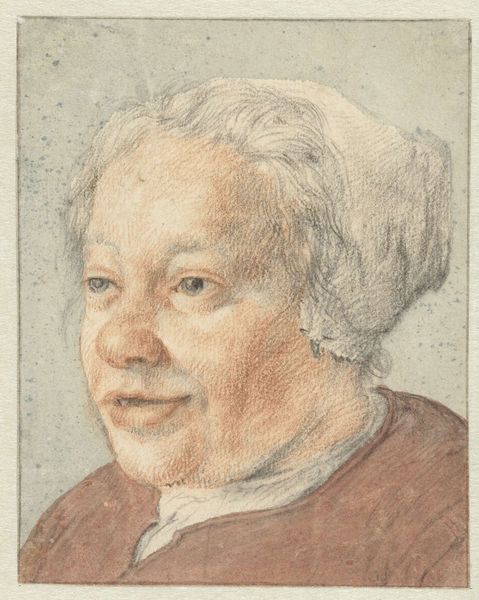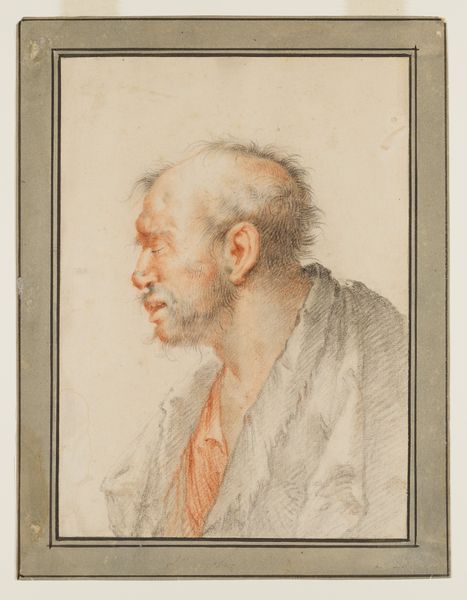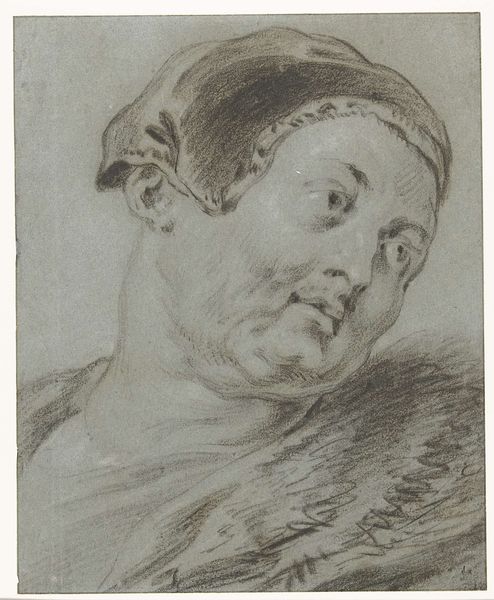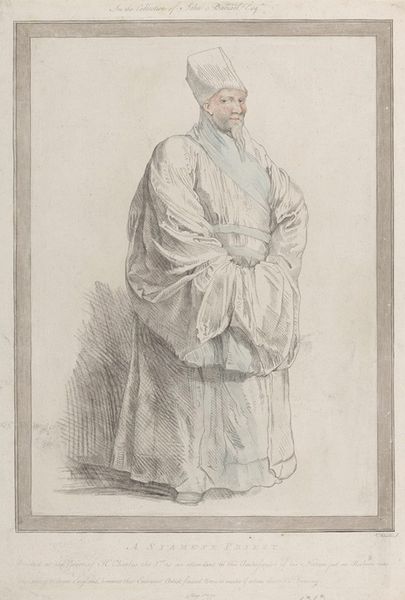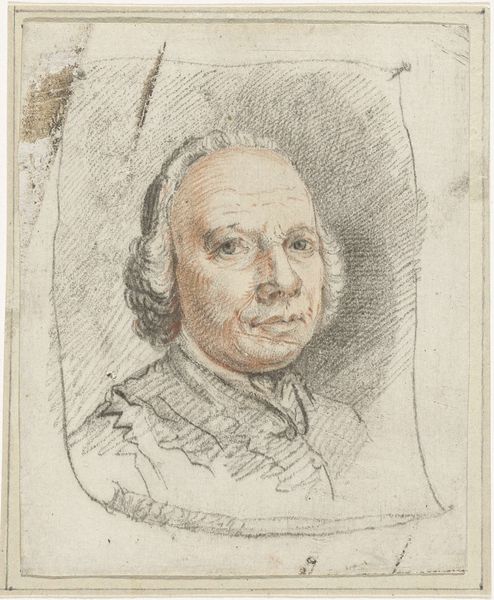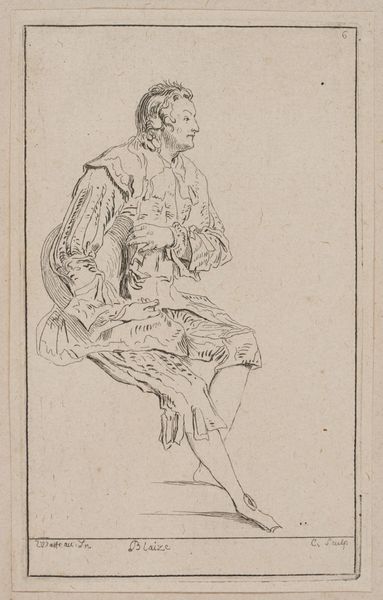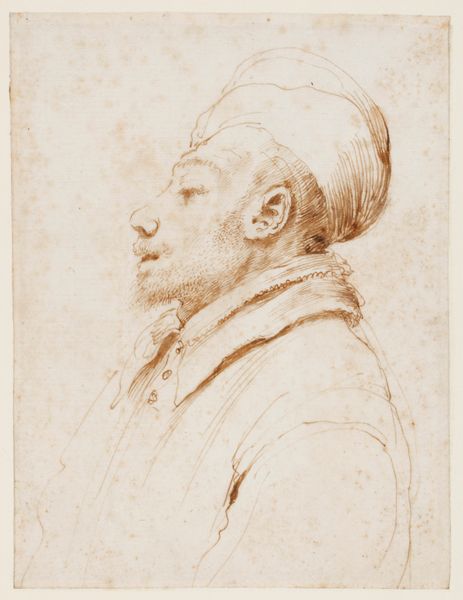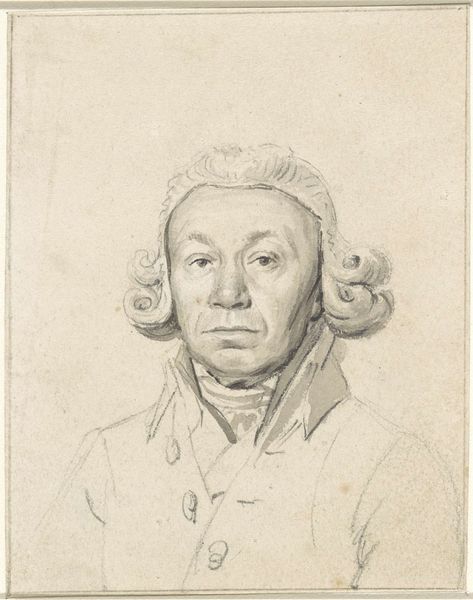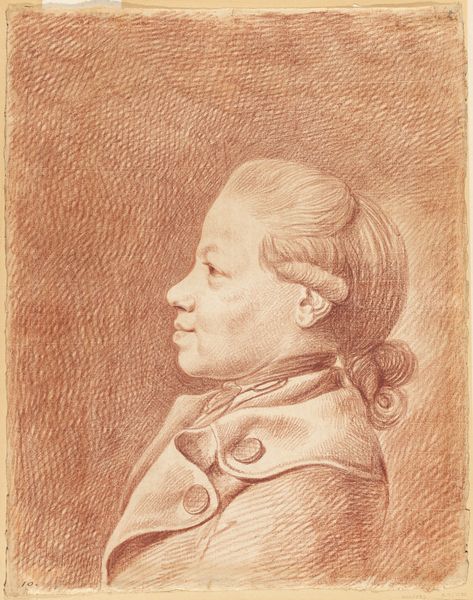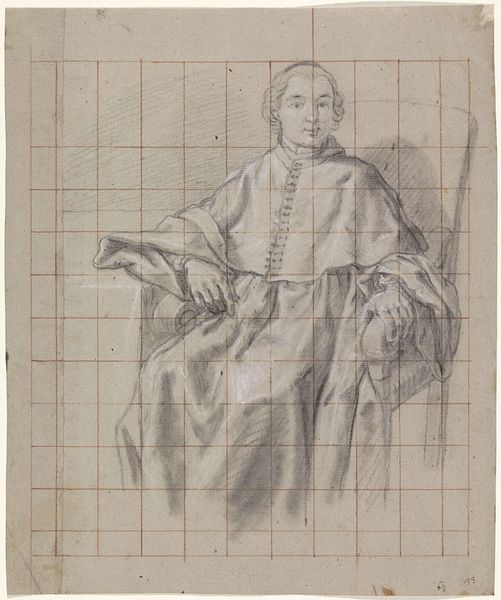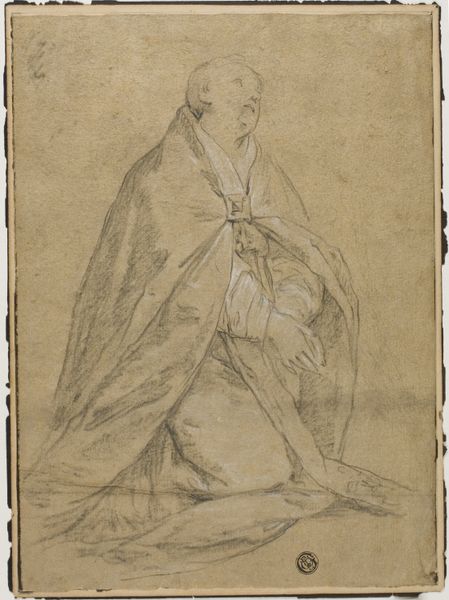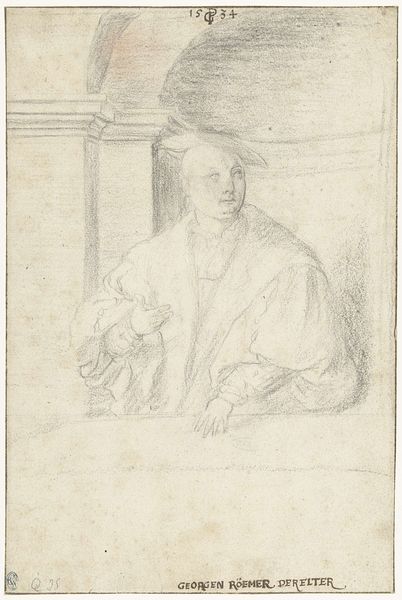
drawing, charcoal
#
portrait
#
drawing
#
baroque
#
charcoal drawing
#
portrait drawing
#
charcoal
Dimensions: height 113 mm, width 115 mm
Copyright: Rijks Museum: Open Domain
Editor: So, this is Cornelis Dusart's "Buste van een vrouw, naar rechts in profiel," a charcoal drawing from around 1670-1750, currently at the Rijksmuseum. It feels… strangely intimate for a formal portrait? What catches your eye in this piece? Curator: It's that intimacy you mention that truly resonates. Portraits, particularly those of women in this period, are often heavily laden with the expectations of the male gaze. But here, Dusart gives us something different. Look at the stark simplicity of the medium – charcoal. It avoids idealization, presenting a raw, almost unflinching view. What do you make of the subject's visible blemish? Editor: I hadn't considered that. I suppose it goes against the trend to represent sitters perfectly. Curator: Precisely! It's a refusal to participate in the beautification often demanded of female subjects. Consider also the era – the late 17th to early 18th century – a period of burgeoning scientific rationalism, yet also deeply entrenched social hierarchies. Could this be read as a quiet act of defiance, a subtle challenge to those conventions? Do you think it might relate to the rise of female education in that era? Editor: It's definitely a compelling interpretation. Thinking about it that way… it really shifts my perception. Maybe it's about female visibility, beyond just the male perspective. Curator: Exactly. It invites us to consider the power dynamics inherent in portraiture, the societal pressures placed on women, and the potential for even subtle acts of resistance through art. Editor: I see what you mean. I initially just saw a portrait, but it's much more layered than that. Curator: And that's the beauty of engaging with art, isn't it? It holds a mirror to both the subject and the society in which it was created, forcing us to question our assumptions.
Comments
No comments
Be the first to comment and join the conversation on the ultimate creative platform.
